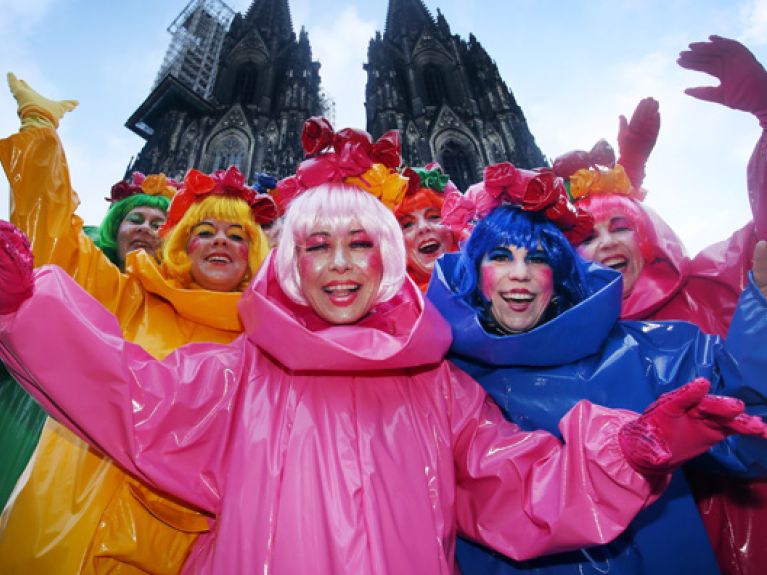A typology of carnival processions
Not all carnival processions are the same – an overview of carnival festivities.

Each “Jeck” – in other words, jester or carnival reveller – is different. This is even stipulated in one of Cologne’s unofficial carnival “commandments” about tolerance. Strong differences also exist between the various carnival processions in Germany. Especially in the Rhineland and southwest Germany, revellers are spoilt for choice:
The Shrove Monday processions (Rosenmontagsumzüge) in the Rhineland carnival strongholds of Cologne, Dusseldorf and Mainz are really something for professional partygoers. If you want to endure hours on the edge of the road in wintery temperatures with millions of other revellers, you need to have previous experience of mass festivities. Putting up with the freezing cold weather is worth it though, because nowhere else is the mood more exuberant. In Cologne the hearts of single men are frequently warmed when the ladies distribute “Bützjer” (little kisses). Its arch enemy Dusseldorf likes to be political on Shrove Monday. The floats with satirical motifs created by sculptor Jacques Tilly have focused international attention on the Dusseldorf parade more than once. Carnival in Mainz is less sarcastic: here, too, hundreds of thousands line the streets on Shrove Monday, but the mood and pace is more relaxed. The reason for that may be the fact that a goblet of wine belongs to Fassenacht, as carnival is known here, accompanied by “Weck und Worscht” (bread roll and meat sausage).
Looking for somewhere to take the family? Then the Mainzer Jugendmaskenumzug (young people’s masquerade procession) on Carnival Saturday is just the thing. Or there’s the Kölner Schull- un Veedelszöch, when roughly 50 Cologne schools and almost as many local neighbourhood associations parade through the city centre on Carnival Sunday.
New to the world of carnival processions? The parade of jesters in Mannheim attracts a manageable 100,000 onlookers. Rather unexpectedly here, so far from the sea, the revellers’ cry is “Ahoy”.
Southwest Germany is another centre of carnival revelry. If you would like to experience the archaic, dark side of carnival, you should visit the Swabian-Allemannic Fasnetsumzüge (carnival processions) – for example, the Narrensprung (Fools’ Jump) in Rottweil or the Ommzug (procession) in Rottenburg am Neckar. Devils, witches and all kinds of spirits haunt the alleyways, cracking whips or swinging steaming cauldrons. Great emphasis is placed on tradition when the different jesters’ guilds proudly present their “Häs” (costume). Nevertheless, masters of disguise can soon feel rather lonely: while active procession participants stand out in their fantastic masks and costumes, the average adult onlooker tends to be rather less flamboyant or often not dressed up at all.

